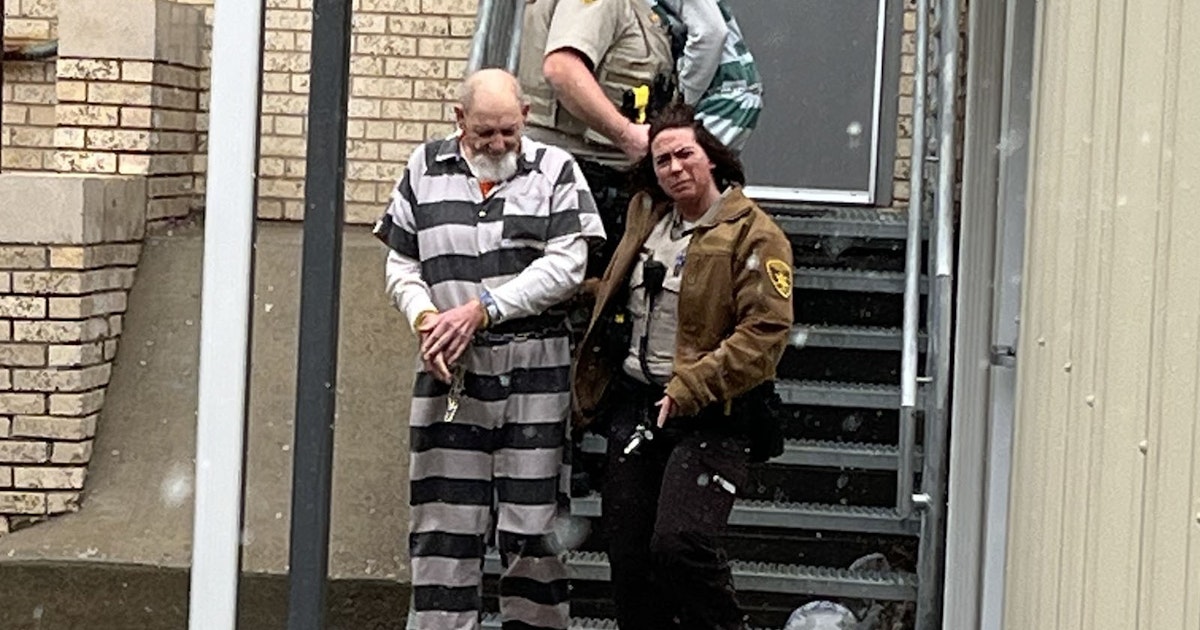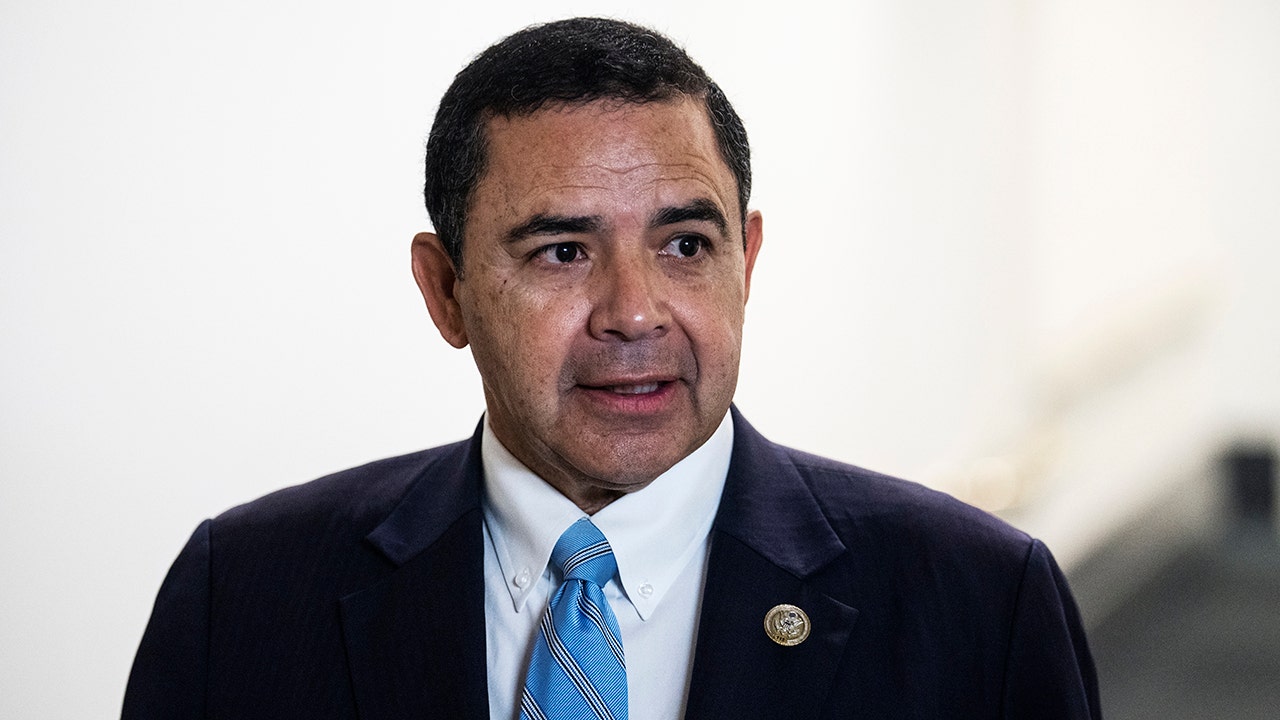Louisiana
8 Most Inviting Towns in Louisiana
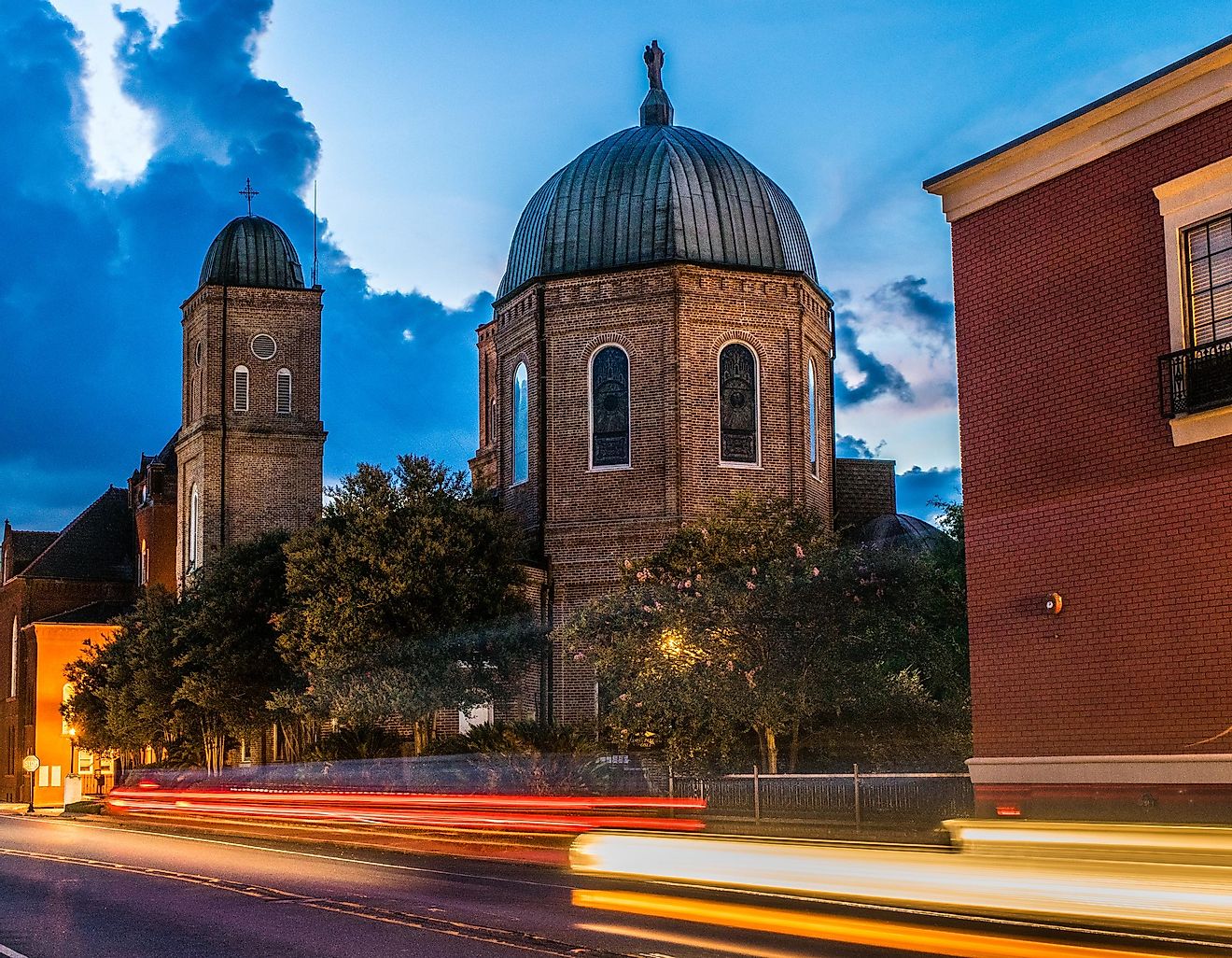
Featuring towns dating back to 1714, wetlands composing over 32% of the state, and the well-known Mardi Gras festival, Louisiana has it all: history, nature, and culture. To experience the state’s full array of experiences, however, visitors must venture out into the smaller, lesser-known towns awaiting visitors with incredible food, beautiful architecture, and breathtaking nature. So, explore the charm and hidden delights of Louisiana’s most inviting towns and discover why these spots are celebrated by visitors and locals alike.
Abita Springs
Despite its small population of approximately 2,700 people, Abita Springs has been a hot tourist destination since the 19th century due to its wells containing pristine, healing waters. Today, visitors flock from around the country to enjoy its craft beer made with the same pure water. The Abita Brewing Company is one of the best in the country and is an excellent stop to learn about the town’s history as well as the brewery’s unique brewing process. Visitors will also find that Abita Springs has a special energy surrounding it, with an artsy, eclectic atmosphere and local music scene. The Abita Springs Opry always has a great calendar full of Louisiana Roots music that visitors should check out to enjoy local music!
The Tammany Trace Bike Trail allows visitors to see the surrounding natural areas and is a rails-to-trails path that connects five towns in the area. It is great for bikers, hikers, and runners alike! Speaking of bikers, Abita Springs is home to the annual Louisiana Bicycle Festival, which hosts both vintage and art bikes and features a bicycle cruise through the town.
Greenwood
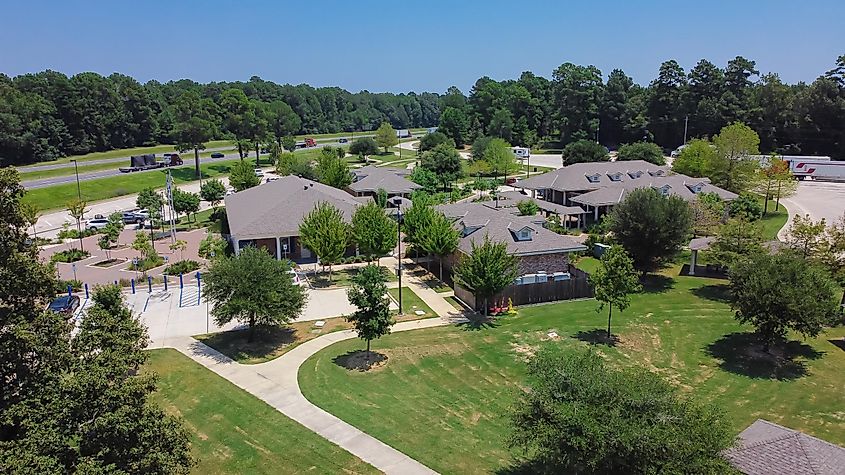
Aerial view of the pavilion and buildings with shingle roofs at the welcome center and rest area in Greenwood, Louisiana.
Greenwood, known as the “Gateway to Louisiana” due to its proximity to the Texas border, is a charming town that will certainly welcome visitors to the state. The small town is filled with activities for all ages. The nearby Wonder Oasis Waterpark will provide a fun day out for families, while the Crooked Hollow Golf Club will enchant golf lovers with its scenic course surrounded by tall pines. The American Rose Center features 118 acres of impressive gardens, making it the largest rose center in the country. For travelers visiting on the weekend, make sure to check out the town’s Saturday morning farmers market, filled with local produce and artisan goods.
Golden Meadow
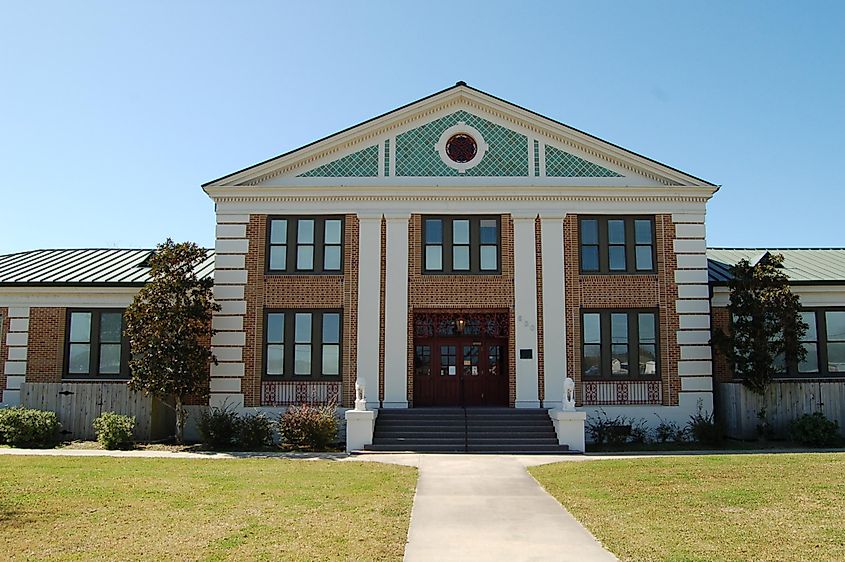
Golden Meadow has an exciting history, as it is home to a centuries-old Cajun community that did not become an official city until 1950. This coastal town does not disappoint with its tasty, fresh seafood and is a tranquil destination for wildlife enthusiasts and fishers alike. Fishers can rent a cabin along Catfish Lake and enjoy a calm day out on the waters. The nearby Pointe-Aux-Chenes Wildlife Refuge, abundant in wildlife, will take visitors’ breath away with its variety of fish, waterfowl, and alligators. The refuge also has areas to camp, fish, and boat. Fishers should also check out the Golden Meadow-Fourchon International Tarpon Rodeo, an annual fishing event that brings in fishers from all over to participate.
Saint Francisville
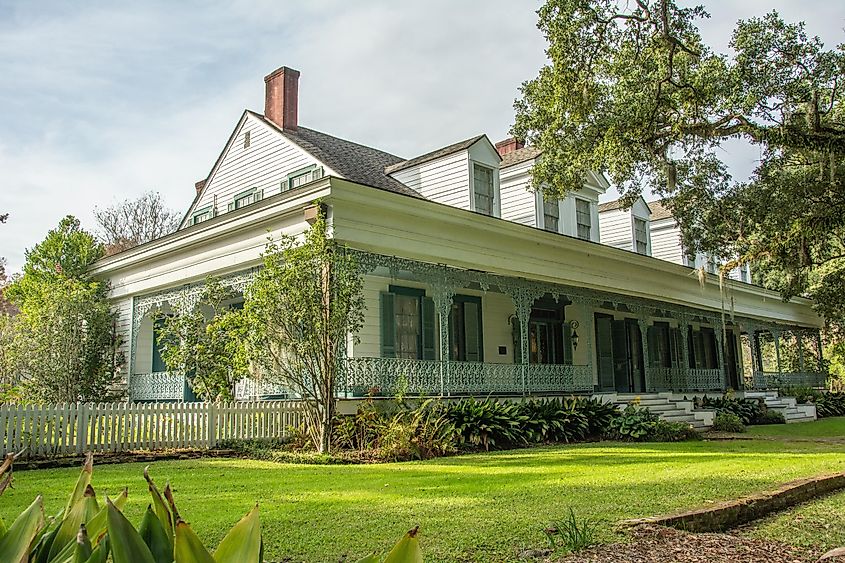
In the rolling hills, about a half hour north of Baton Rouge lays the charming town of Saint Francisville. Travelers will feel immersed in the town’s southern charm, home to many historical sites and unique shops. The West Feliciana Historical Society Museum will make visitors feel inspired by the town’s history. The Royal Inn is also located in St. Francisville’s old town and is a truly luxurious bed and breakfast, even including a butler for its guests. For hikers, the Clark Creek Natural Area is a must-visit. Affectionately known as the “Little Grand Canyon” by locals, Clark Creek features seven beautiful waterfalls and trails for hikers of all levels.
Jeanerette
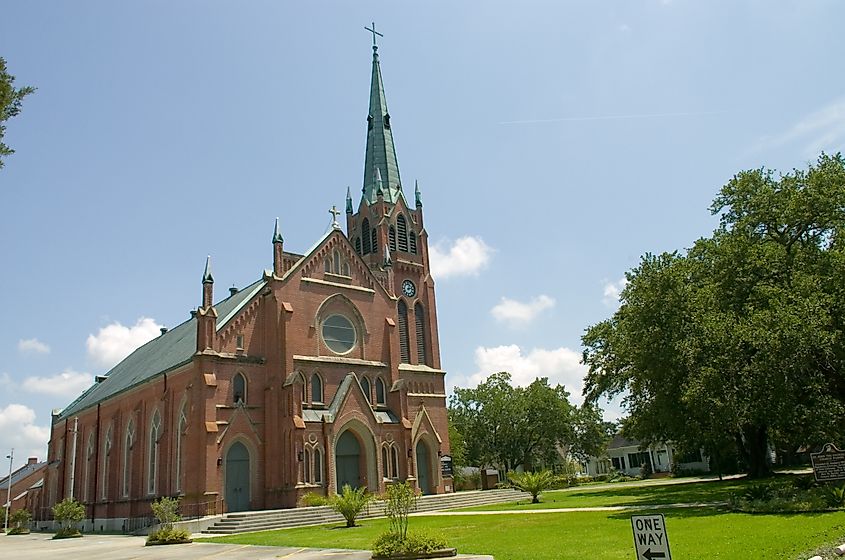
Jeanerette, Louisiana – St. John the Evangelist Roman Catholic Church. By Dieter Karner, CC BY 2.0, Wikimedia Commons
Jeanerette certainly lives up to its nickname as the “Sugar City”, featuring a sweet atmosphere filled with music, food, and historic architecture. History lovers will appreciate the town’s sugarcane history and can visit the Jeanerette Bicentennial Park and Museum to learn about the sugarcane industry and its effect on the town over the past 200 years. Cooper Street Coffee is a great place to make a pitstop, where customers can appreciate the cafe’s cozy brick walls and live music sessions. Plan your trip to Jeanerette during Mardi Gras to experience the town’s colorful parades and participate in traditional balls.
Natchitoches
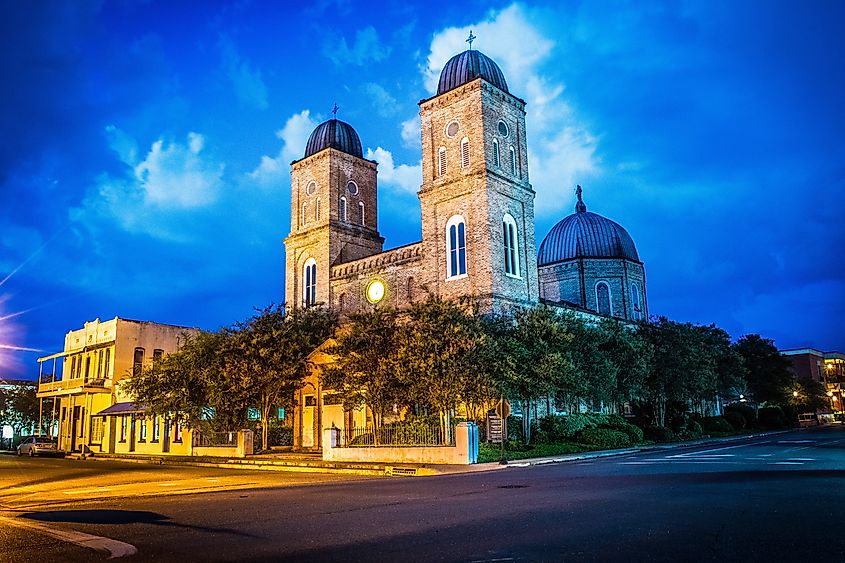
Light trails at the Minor Basilica in Natchitoches, Louisiana.
Founded in 1714, Natchitoches provides visitors with an immersive historical and cultural experience as the oldest city in Louisiana. Visitors can stroll down the 33-block historic district, lined with beautiful architecture and various businesses, including candy shops, boutiques, art galleries, and more. The American Cemetery is another magnificent historical stop, featuring graves dating back to colonial times. Cane River Padel and Peddle Sports provides an afternoon full of water adventures, with canoe, kayak, and pedal boat rentals. To end an eventful day, travelers can visit Maglieux’s Riverfront Restaurant for gorgeous views of the river and fantastic, traditional Cajun food and seafood.
Breaux Bridge
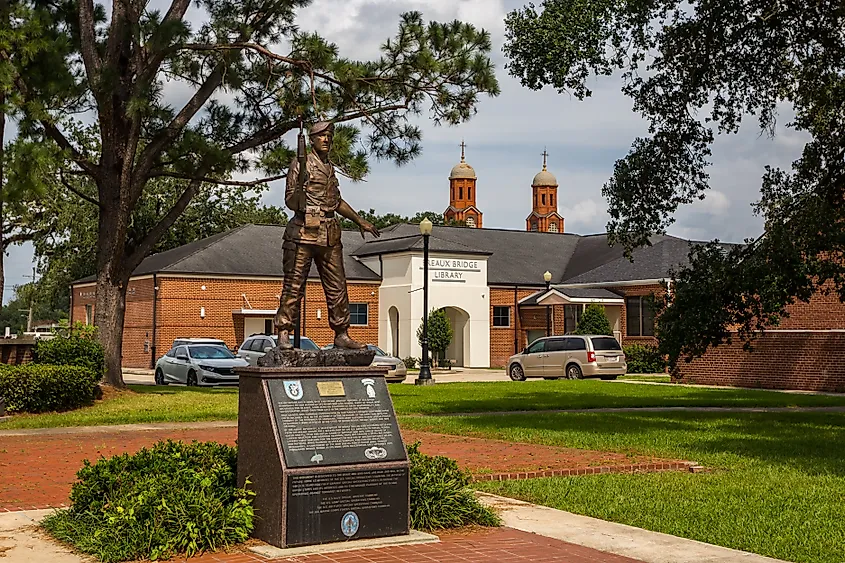
Known as the Crawfish Capital of the World, Breaux Bridge is another must-visit town for seafood lovers. The town’s cuisine, history, and cajun zydeco music give it a warm, inviting environment that visitors from all over the country will love! The town’s center features cozy boutiques and antique shops. Travelers who venture to the outskirts of the town will find beautiful natural areas such as Lake Martin, home to an abundance of wildlife as well as moss-draped cypress trees. Breaux Bridge is also filled with cozy, quaint inns and bed and breakfasts. Check out Bayou Teche Bed and Breakfast, a restored hotel from the 19th century with an excellent location near various seafood restaurants. But make sure to save your appetite for the town’s annual Breaux Bridge Crawfish Festival if you will be in town!
Minden
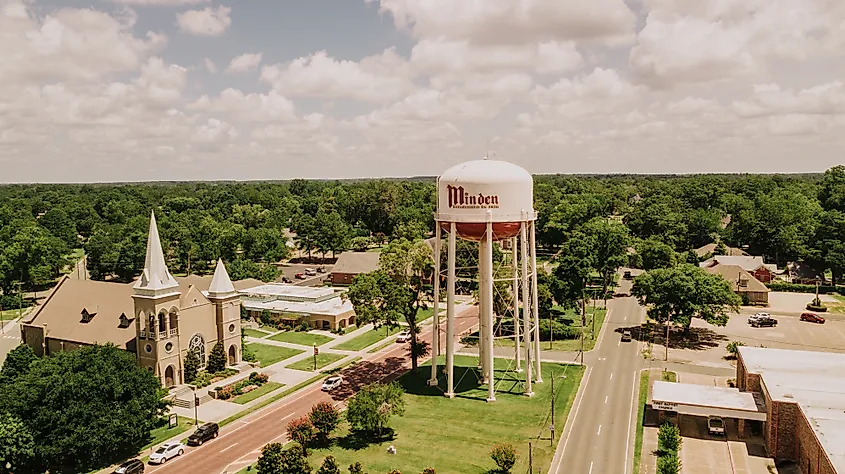
Aerial view of Minden, Louisiana.
Minden is a charming town filled with history, culture, and nature. Its downtown area features a memorable red-bricked main street and a historic district dotted with beautiful Victorian-era homes. A short trip out of town will lead to the Germantown Colony and Museum, a preserved settlement in the wilderness that immerses visitors in life during the German-based Utopian Movement. Also on the outskirts lies Lake Bistineau State Park, a natural oasis filled with the state’s Tupelo and Cypress trees as well as an impressive variety of fish species. The state park includes five hiking trails, campsites, and cabins to immerse naturegoers in the outdoors. Travelers with a flexible calendar should visit the Webster Parish Fair, which features a parade through the downtown area, as well as rides and games for the family.
Discover Louisiana’s Hidden Gems
Although these eight towns may not be the most well-known in Louisiana, visitors who make the trek out to them will not be disappointed due to their rich blend of history, culture, and natural wonders. From the healing waters and tasty beer of Abita Springs to the vibrant charm and nature of Breaux Bridge, each town offers something unique to its visitors. So, consider adding these destinations to your itinerary and immerse yourself in the warmth and hospitality that define Louisiana’s small-town charm.

Louisiana
Rolling Stones’ Mick Jagger, Governor Jeff Landry trade barbs at Jazz Fest in New Orleans
Rolling Stones’ legendary frontman Mick Jagger took a swipe at Louisiana Gov. Jeff Landry Thursday night during the rock ‘n’ roll group’s set at the New Orleans Jazz & Heritage Festival, and the governor barked back on social media.
After singing the hit “You can’t always get what you want,” Jagger said: “We’re an inclusive group. We like to include everyone. The governor is here, and we’d like to include him, even though he’s trying to take us back to the Stone Age.”
Landry, a conservative Republican, quickly responded with a good-natured quip on his X campaign account, taking a swipe at the 80-year-old singer’s age.
“You can’t always get what you want,” the governor posted on X. “The only person who might remember the Stone Age is @MickJagger. Love you buddy, you’re always welcome in Louisiana! #LoveMyCountryMusic.”
More: Election chaos in Louisiana as only state without a congressional map for fall ballot
Greg Hilburn covers state politics for the USA TODAY Network of Louisiana. Follow him on Twitter @GregHilburn1.
Louisiana
How Louisiana Is Coping With Flooding In Cemeteries


This article is part of The State of Science, a series featuring science stories from public radio stations across the United States. This story, by Eva Tesfaye, was published in collaboration with WWNO.
Emily Dalfrey lives across the street from Niblett’s Bluff Cemetery, where generations of her family are buried, in Vinton, Louisiana.
In 2016, a period of prolonged rainfall caused flooding so severe that people could drive boats over the cemetery. The water put so much pressure on the graves that some of the vaults, which are located near the surface, popped open. Some of Dalfrey’s own family members’ caskets were carried away and deposited in her yard.
Unsure how to restore the cemetery, the community contracted Gulf Coast Forensic Solutions, a company that helps people locate and rebury loved ones after natural disasters damage cemeteries.
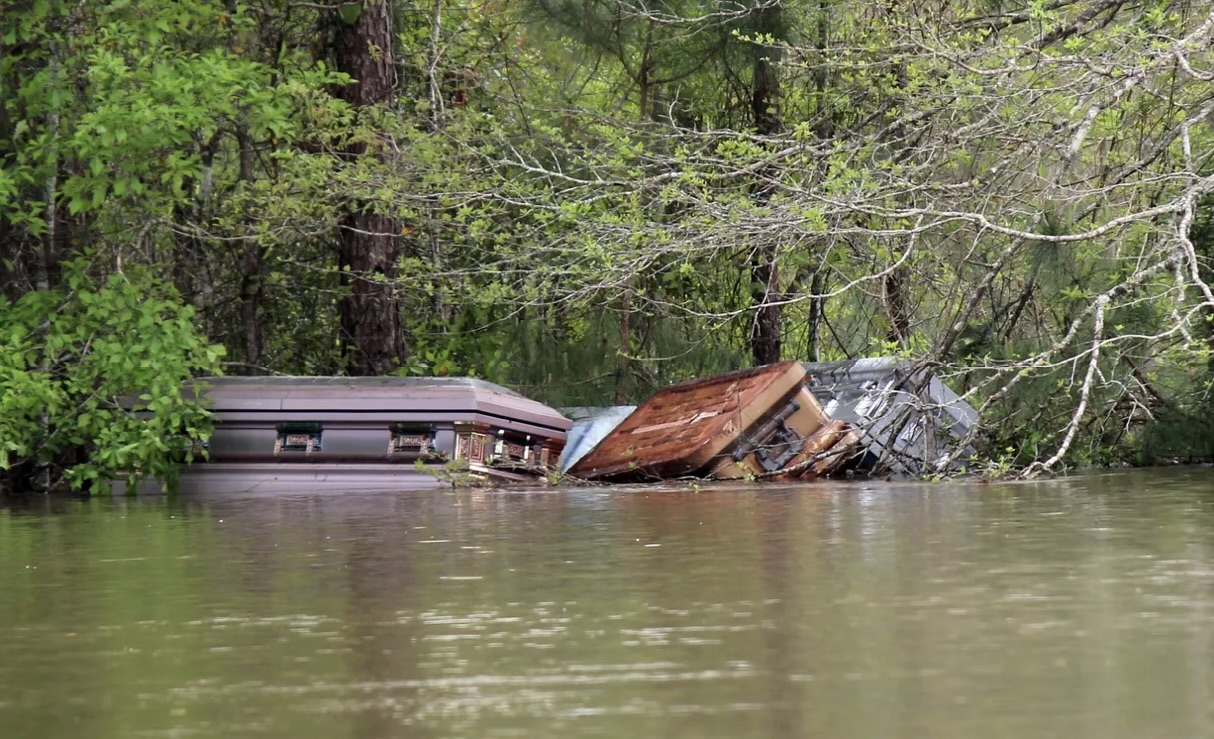
“We truly would have not gotten it done if we would not have had that guidance and that help,” Dalfrey says of Gulf Coast’s assistance. “Because when you bury your family, you think they’re there forever.”
Louisiana has dealt with flooded cemeteries and caskets washing away for decades, but the problem is getting worse—and more widespread. As climate change increases the likelihood of weather-related disasters, many other states are now grappling with damaged cemeteries. And they’re looking to Louisiana for help.
Hurricanes, Flooding, And Mudslides
Charlie Hunter, the CEO of Gulf Coast Forensic Solutions, started in this line of work during his time at the Calcasieu Parish Coroner’s Office, where he worked in death investigation. Normally, such a job involves investigating homicides and car accidents, but Hunter found himself spending a lot of time doing grave site recovery after Hurricane Katrina in 2005.
He started his company in 2020, repairing over 75 cemeteries across Cameron and Calcasieu Parishes in southwest Louisiana after Hurricanes Laura and Delta. He eventually left his job at the coroner’s office and expanded the company in 2023.
“It’s being able to give families a little bit of peace at the end of the day,” he says, “and so I think that’s what’s really important. It’s a never-ending job.”
Working in a state that’s been so frequently pummeled by hurricanes has made him something of an expert in his field.
“Now that cemetery damage and restoration is such a big deal, people reach out to us from all across the country, whether it’s from hurricanes, flooding events, mudslides,” he says.
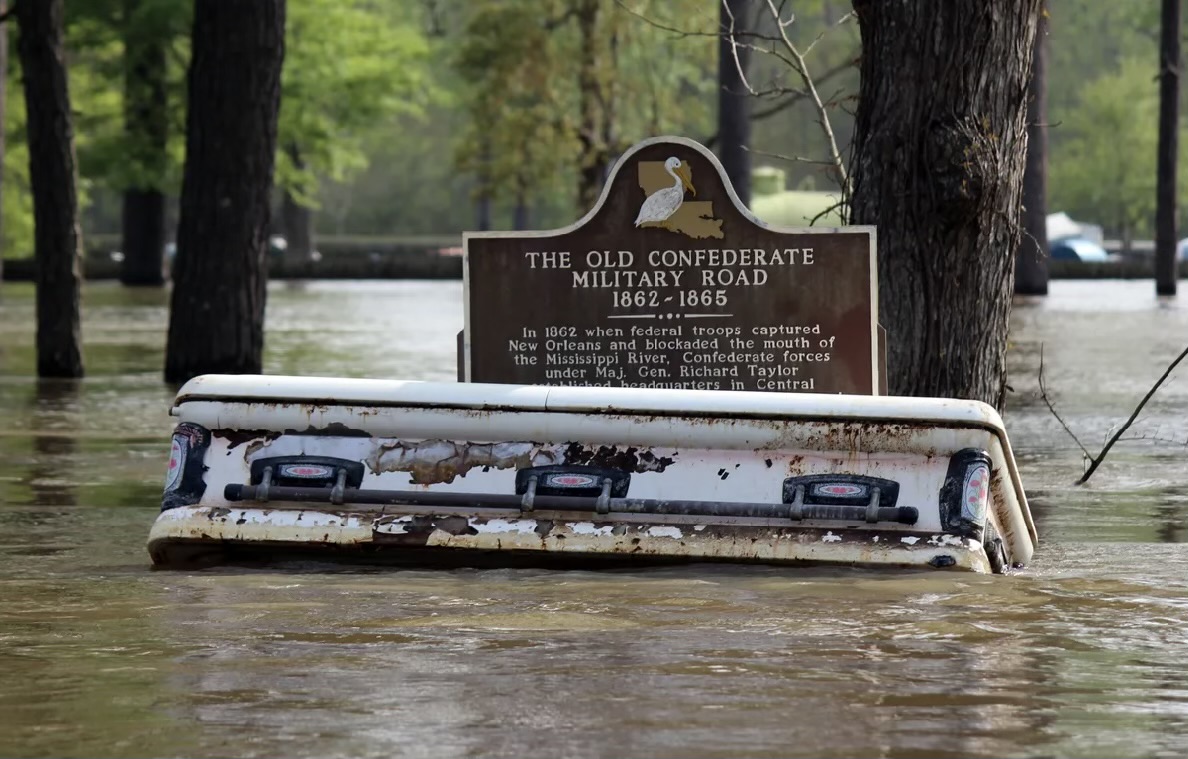
Hunter says he’s helped people in Florida, South Carolina, Tennessee, and even California. One of them was Eva Kenner from Port Charlotte, Florida. She manages Charlotte Harbor Cemetery, the oldest marked cemetery in its county. It was hit by Hurricane Ian in 2022, resulting in 26 fallen trees and close to 100 damaged gravestones.
“I’ve been there 20 years working at the cemetery and we’d never had damaged headstones from a storm before,” Kenner says.
She hired Gulf Coast Forensic Solutions to help repair the cemetery and says the company fixed around 80 headstones in one week—but there’s no getting back those beautiful trees.
“The 26 trees just took away the whole atmosphere. There were great, giant old oaks, hundreds of years old, sun dappled,” she says.
But the repaired headstones have held up, she says, even after other storms have torn through, leaving debris on the ground.
The Louisiana Cemetery Response Task Force
The flooding that damaged Dalfrey’s family members’ graves in 2016 affected more than 800 graves in 74 cemeteries across Louisiana. After that event, the Louisiana Cemetery Response Task Force was created.
“We are the only state that has that,” says Ryan Seidemann, the task force chairman.
The task force is activated when there has been a disaster declaration and reports of cemetery damage. It is currently activated and has been since Hurricane Ida in 2021.
Seidemann says the task force was created to fill a void in federal assistance for cemetery recovery and because in many storm-prone places, there is no one left taking care of cemeteries.
“A lot of folks have moved away over the years. There really weren’t a lot of people to speak for those descendants who had taken off and floated away with the storm surge,” he says.
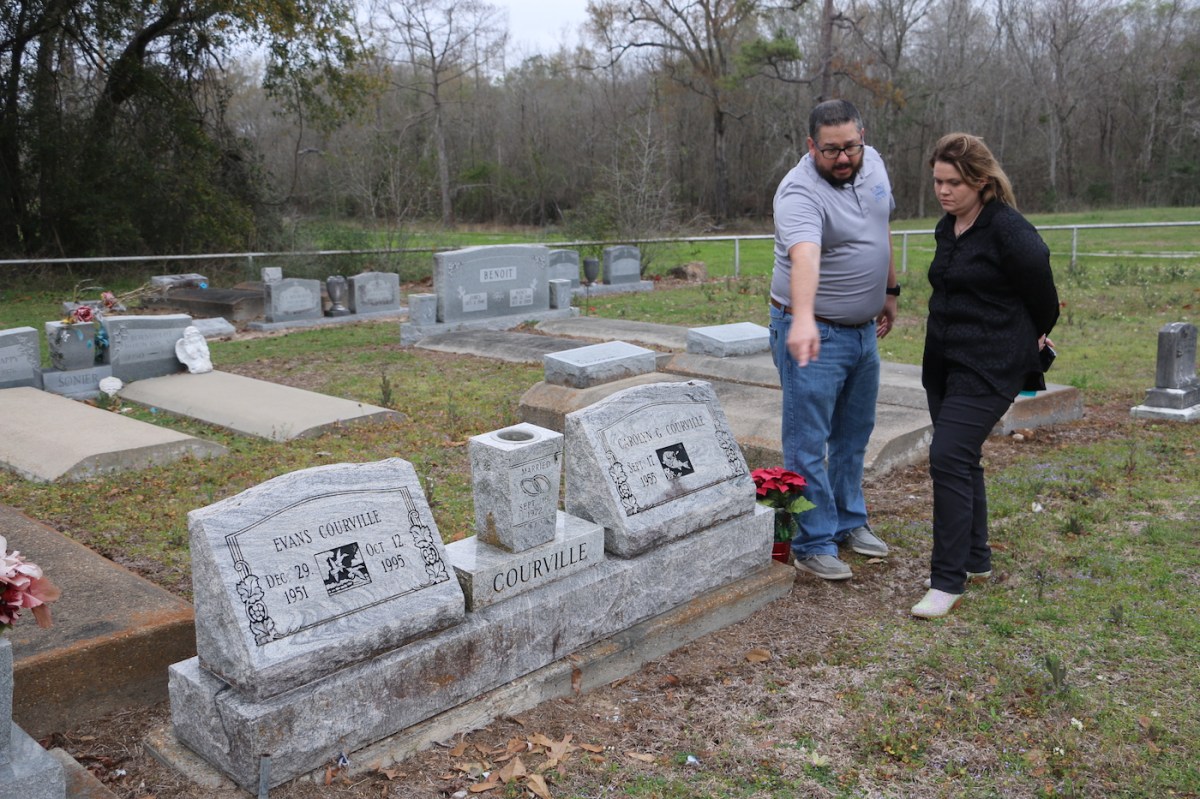
Like Hunter’s company, the task force helps find, recover, and identify lost caskets. Reburial can cost thousands of dollars, but family members of the deceased can receive funding for it through the Federal Emergency Management Agency (FEMA)’s individual assistance program. Because the process of getting that money can be difficult, especially when people are already dealing with fallout from a disaster in other parts of their lives, the task force also helps people apply for it.
And also like Hunter, the task force gets calls from other states where communities find themselves in need of that kind of cemetery restoration expertise—usually along the Atlantic Coast, but sometimes even in the West.
“Oddly, [requests for help have] come from places such as New Mexico, which you wouldn’t think would have flood problems with cemeteries,” says Seidemann, “but apparently as they’ve had wildfire problems and then rainstorms, the undergrowth that is keeping burials in place there is washing off.”
Preparing For Extreme Weather
Climate change is exposing how unprepared cemeteries are for extreme weather events says Jennifer Blanks, a PhD candidate at Texas A&M University who studies cemetery preservation and management.
“Climate change is showing that there actually isn’t really a good protocol or procedure to help with those kinds of issues, in terms of mitigating cemeteries from disasters, and how to recover them afterward,” Blanks says.
That is especially true for Black and other minority cemeteries. In her research, Blanks has found that Black cemeteries in Louisiana have more exposure to flood hazards and proximity to hazardous chemical sites.
“Traditionally, Black residents and non-white people are forced to settle on land that is undesirable for different reasons, whether it cannot produce any type of crop or products, or the value of the land is low because it is in a floodplain,” Blanks says.
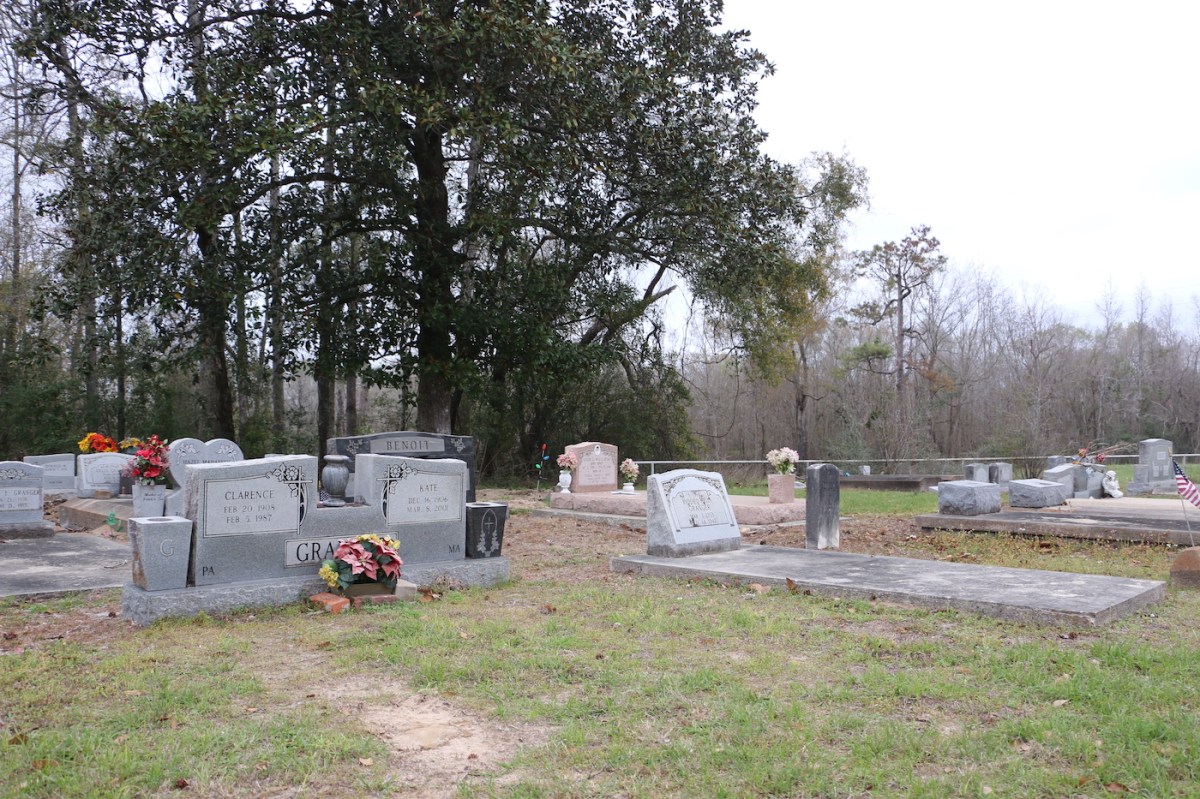
One of the solutions is to bury caskets underground instead of in the surface vaults that are common in Louisiana. Niblett’s Bluff Cemetery now requires that new burials be underground, though there is some debate over whether graves in New Orleans are mostly above ground due to tradition or due to the high water table.
Having good documentation of who is buried where is also extremely important for recovery. If a casket is dislodged and a deceased person cannot be identified, if their next of kin cannot be contacted, or if that person can’t pay, the casket will not get reburied. Hunter says that in those cases his company just tries to get the casket out of public view.
This is exactly what happened in Charlotte Harbor Cemetery in Florida. It could not get FEMA assistance, and Kenner says that finding and contacting relatives of people who had died so long ago would be an impossible task for a cemetery that was established in 1879.
Even in Louisiana—which started to require identification on caskets after Hurricane Katrina—the lack of documentation is still a challenge, Seidemann says.
“Compliance with that has been spotty at best,” he said.
Blanks said those who manage cemeteries should work with the community to gather local knowledge of graves and consider creating maps.
“It’s one thing to protect the physical landscape,” she says, “but it would also be a disservice to not preserve or recover the cultural heritage that is in the landscape itself.”
Further Reading
Louisiana
Louisiana AG sues Biden Admin over new ATF rules on private firearms sales

BATON ROUGE, La. (KALB) – Louisiana Attorney General Liz Murrill announced that she is suing the Biden Administration in a multi-state coalition over what she says is an unlawful ban on private firearm sales.
In the weeks before, the U.S. Department of Justice expanded their rules and regulations, requiring background checks and licenses for any private gun sale.
The Office of the Attorney General claims the restrictions are unconstitutional, intrusive and serve as a direct attack on Louisiana’s right to bear arms.
Murrill released a statement with her lawsuit announcement saying:
“These new rules clearly violate the Second Amendment. The Biden Administration continues to recklessly attack our constitutional rights. Louisiana will challenge them every step of the way.”
Click here to report a typo. Please provide the title of the article in your email.
Copyright 2024 KALB. All rights reserved.
-

 News1 week ago
News1 week agoLarry Webb’s deathbed confession solves 2000 cold case murder of Susan and Natasha Carter, 10, whose remains were found hours after he died
-

 World1 week ago
World1 week agoHaiti Prime Minister Ariel Henry resigns, transitional council takes power
-

 News1 week ago
News1 week agoFirst cargo ship passes through new channel since Baltimore bridge collapse
-

 World1 week ago
World1 week agoUS secretly sent long-range ATACMS weapons to Ukraine
-

 World1 week ago
World1 week agoSpanish PM Pedro Sanchez suspends public duties to 'reflect'
-

 News1 week ago
News1 week agoAmerican Airlines passenger alleges discrimination over use of first-class restroom
-

 Movie Reviews1 week ago
Movie Reviews1 week agoHumane (2024) – Movie Review
-

 Education1 week ago
Education1 week agoVideo: Johnson Condemns Pro-Palestinian Protests at Columbia University

